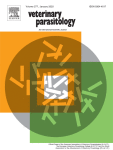Ver ítem
- xmlui.general.dspace_homeCentros Regionales y EEAsCentro Regional Buenos Aires SurEEA BalcarceArtículos científicosxmlui.ArtifactBrowser.ItemViewer.trail
- Inicio
- Centros Regionales y EEAs
- Centro Regional Buenos Aires Sur
- EEA Balcarce
- Artículos científicos
- Ver ítem
Combined moxidectin-levamisole treatment against multidrug-resistant gastrointestinal nematodes: A four-year efficacy monitoring in lambs
Resumen
Nematicide combinations may be a valid strategy to achieve effective nematode control in the presence of drug resistance. The goal of the current trial was to evaluate the pharmaco-parasitological performance of the moxidectin (MOX) and levamisole (LEV) combination after four years of continuous use in lambs naturally parasitized with multi-resistant gastrointestinal nematodes. At the beginning of the trial, 40 lambs were divided into four groups (n =
[ver mas...]
Nematicide combinations may be a valid strategy to achieve effective nematode control in the presence of drug resistance. The goal of the current trial was to evaluate the pharmaco-parasitological performance of the moxidectin (MOX) and levamisole (LEV) combination after four years of continuous use in lambs naturally parasitized with multi-resistant gastrointestinal nematodes. At the beginning of the trial, 40 lambs were divided into four groups (n = 10), which were untreated (control) or subcutaneously treated with MOX (0.2 mg/kg), LEV (8 mg/kg) or with the combination MOX + LEV (administered separately at 0.2 and 8 mg/kg, respectively). Blood samples were collected at different times post-treatment and LEV and MOX plasma concentrations were measured by HPLC. The clinical efficacy of the continuous use of MOX + LEV combination was assessed with the controlled efficacy test (CET), performed at the beginning and end of the study, and with the faecal egg count reduction (FECR) test, performed over the four-year study period. No significant adverse pharmacokinetic changes were observed either for MOX or LEV after their co-administration to infected lambs. The CET (first year) showed efficacies of 84.3 % (Haemonchus contortus), 100 % (Teladorsagia circumcincta and Trichostrongylus axei), and 97.4 % (T. colubriformis). After the repetitive use of the combined treatment for four years, those efficacies remained high (100 %) and only decreased to 58 % against T. colubriformis. The evaluation of the FECR over the study period showed fluctuations in the performance of the combined administration. The initial FECR (2014) was 99 % (MOX), 85 % (LEV) and 100 % (MOX + LEV). The co-administration of MOX + LEV during the four-year experimental period resulted in a significantly higher anthelmintic effect (87 %) than that of MOX (42 %) or LEV (69 %) given alone. The combined use of MOX + LEV to control resistant gastrointestinal nematodes appears to be a valid strategy under specific management conditions. A high initial therapeutic response to the combination would be a relevant feature for the success of this tool.
[Cerrar]

Autor
Luque Sonia;
Lloberas, María Mercedes;
Cardozo, Patricia Alejandra;
Virkel, Guillermo;
Farias, Cristina;
Viviani, Paula;
Lanusse, Carlos Edmundo;
Alvarez, L.;
Lifschitz, Adrian Luis;
Fuente
Veterinary Parasitology 290 : 109362 (2021)
Fecha
2021-01-26
Editorial
Elsevier
ISSN
0304-4017
Formato
pdf
Tipo de documento
artículo
Palabras Claves
Derechos de acceso
Restringido
 Excepto donde se diga explicitamente, este item se publica bajo la siguiente descripción: Creative Commons Attribution-NonCommercial-ShareAlike 2.5 Unported (CC BY-NC-SA 2.5)
Excepto donde se diga explicitamente, este item se publica bajo la siguiente descripción: Creative Commons Attribution-NonCommercial-ShareAlike 2.5 Unported (CC BY-NC-SA 2.5)

